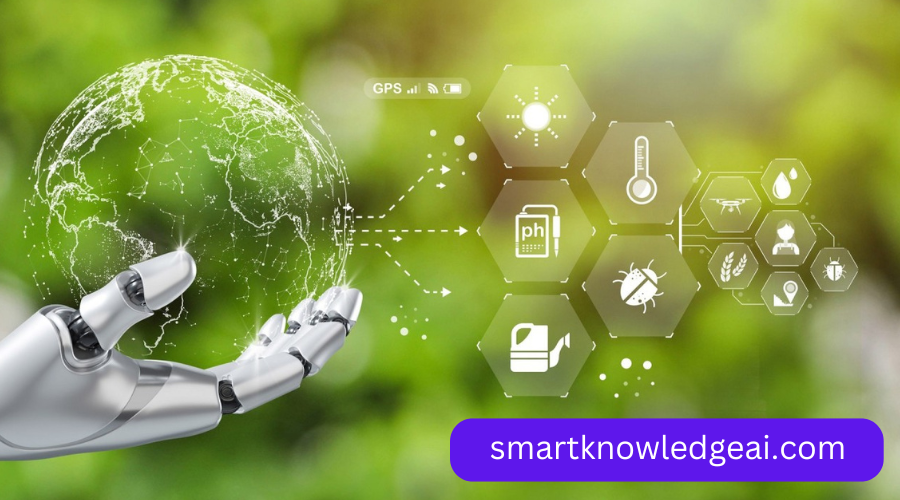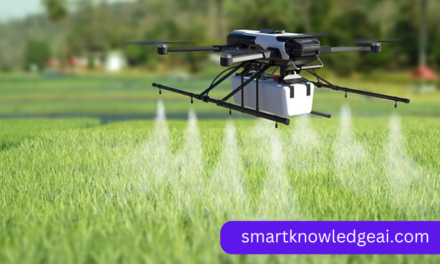Introduction to AI and Climate Change
As the world confronts the realities of climate change, scientists and innovators are exploring new ways to mitigate its effects. Artificial intelligence (AI) has emerged as a powerful tool for tackling climate-related challenges. AI’s potential to monitor environmental changes, optimize energy use, and reduce carbon footprints offers a path toward a more sustainable future. In this blog, we’ll explore the role of AI in combating climate change, the ways it’s being applied across industries, and how it may shape a greener tomorrow.
1. AI for Climate Data Collection and Analysis
AI’s ability to process large amounts of data enables a better understanding of climate patterns and environmental changes.
- Satellite Monitoring: AI-powered satellites can track changes in the Earth’s surface, monitor deforestation, and assess the impact of natural disasters. This data helps scientists measure the effects of climate change on a global scale.
- Weather Predictions: Machine learning algorithms improve the accuracy of weather forecasts, which are essential for predicting and preparing for extreme weather events linked to climate change.
- Climate Modeling: AI enhances climate models by analyzing historical data and projecting future trends. These models guide policymakers in making informed decisions on climate action.
2. AI in Reducing Carbon Emissions
Reducing carbon emissions is a key objective in combating climate change, and AI is playing a central role in this effort.
- Energy Efficiency Optimization: AI can optimize energy consumption in buildings and factories by analyzing usage patterns and suggesting efficiency improvements. This leads to lower emissions and reduced costs.
- Supply Chain Management: AI can help companies minimize their carbon footprint by streamlining logistics and minimizing waste in supply chains, especially in carbon-intensive industries.
- Transportation: AI technologies such as predictive routing and autonomous driving reduce fuel consumption by optimizing travel routes and minimizing idling times, helping cut emissions in the transportation sector.
3. AI for Renewable Energy Solutions
Renewable energy sources are critical to reducing reliance on fossil fuels, and AI makes renewable energy more effective and scalable.
- Grid Management: AI assists in managing smart grids, optimizing energy distribution from renewable sources like wind and solar. This reduces reliance on non-renewable energy during peak demand times.
- Energy Storage: AI helps predict and manage energy storage needs, improving the stability and efficiency of renewable energy sources. This ensures that renewable energy can be reliably integrated into the power grid.
- Predictive Maintenance: AI can predict when renewable energy equipment needs maintenance, reducing downtime and ensuring continuous energy generation.

4. Sustainable Agriculture Powered by AI
Agriculture is a significant contributor to greenhouse gas emissions, but AI is helping to make farming practices more sustainable.
- Precision Farming: AI enables precision farming, where sensors and drones monitor crop health, soil quality, and water usage, optimizing resource use and reducing waste.
- Livestock Monitoring: AI helps monitor livestock health and optimize feeding practices, reducing methane emissions and improving overall efficiency.
- Climate-Resilient Crops: By analyzing climate data, AI assists in developing crop varieties that are resilient to changing weather patterns, ensuring food security despite climate change.
5. AI in Environmental Monitoring and Conservation
AI is instrumental in tracking environmental health and supporting conservation efforts around the world.
- Wildlife Protection: AI-powered cameras and drones help monitor endangered species and protect them from poachers. Data analysis can track animal populations and migration patterns to support conservation.
- Air and Water Quality Monitoring: AI analyzes air and water quality in real time, detecting pollution sources and providing data to create effective mitigation strategies.
- Forest Conservation: AI aids in monitoring deforestation by analyzing satellite images and alerting authorities to illegal logging activities. This helps protect forests, which are essential for absorbing carbon dioxide.
6. Predicting and Mitigating Natural Disasters
Climate change has led to an increase in extreme weather events, and AI is helping to predict and mitigate their impact.
- Early Warning Systems: AI improves early warning systems for disasters like hurricanes, floods, and wildfires. These systems save lives by giving communities more time to prepare and evacuate.
- Disaster Response: AI analyzes data from disaster-hit areas, helping responders prioritize resources and deliver aid to the most affected communities.
- Recovery Planning: AI helps optimize recovery efforts by assessing damage and coordinating resources, accelerating the return to normalcy after a disaster.
7. AI for Carbon Capture and Storage
Carbon capture and storage (CCS) is a key technology in efforts to reduce atmospheric carbon levels, and AI enhances its efficiency.
- Carbon Capture Optimization: AI can model the effectiveness of different carbon capture techniques, improving the efficiency of capturing CO2 emissions from industrial processes.
- Carbon Storage Monitoring: AI ensures the safety and stability of carbon storage sites by analyzing geologic data to predict and prevent potential leaks.
- Identifying Carbon Storage Locations: AI analyzes geological data to identify optimal sites for storing captured carbon, ensuring safe and effective long-term storage.
8. The Role of AI in Promoting Climate Awareness
AI is also a valuable tool for raising awareness about climate change and inspiring action among the public.
- Climate Change Education: AI-driven educational platforms provide users with personalized information on climate change, encouraging individuals to make more sustainable choices.
- Environmental Campaigns: AI can optimize environmental campaigns by targeting the right audience, ensuring that climate-related messages reach those most likely to act.
- Virtual Climate Experiences: Virtual reality experiences powered by AI can simulate the impacts of climate change, helping people understand its effects and inspiring them to support climate initiatives.

9. Challenges of Using AI for Climate Action
While AI offers substantial benefits, it’s not without challenges. Addressing these issues is crucial to maximizing AI’s positive impact on climate change.
- Energy Consumption: AI itself requires significant energy, especially for training large models. Finding ways to minimize AI’s carbon footprint is necessary to ensure net-positive outcomes.
- Data Privacy: Collecting environmental data often involves monitoring large areas or entire ecosystems. Ensuring privacy and responsible data use is essential to prevent misuse.
- Access and Equity: AI tools for climate action should be accessible to all communities. Ensuring that these solutions benefit vulnerable populations and developing nations is crucial for global impact.
10. The Future of AI in Climate Change Mitigation
The intersection of AI and climate change promises significant advancements, but the future will require collaboration across sectors.
- Policy and Regulation: Governments need to establish policies that support the ethical use of AI for climate action, ensuring that AI benefits everyone fairly.
- Collaboration with Research Institutions: Collaborative research between tech companies and environmental organizations can drive innovative solutions for tackling climate change.
- Continuous Innovation: As AI technology advances, new solutions for climate change mitigation will emerge. Embracing a mindset of continuous improvement will allow AI to have a lasting positive impact.
To Sum Up
AI is a powerful tool in the fight against climate change, offering innovative solutions across sectors like energy, agriculture, and environmental conservation. By leveraging AI to collect data, monitor environmental health, and promote sustainability, we have a unique opportunity to address climate challenges more effectively. As AI technology continues to evolve, it will play an increasingly important role in building a more sustainable future. By adopting AI responsibly and collaboratively, we can create solutions that have a lasting, positive impact on our planet.









